How I Gave Tools and Strategy to My Team of Designers
In the rapidly evolving landscape of digital products, designing an exceptional member experience is paramount. Balancing user needs with business goals requires a strategic approach rooted in well-defined experience design pillars. Here, we outline a comprehensive product design strategy leveraging key principles and shared responsibilities.
1. Prioritize the Member Experience
At the heart of any product design strategy is the commitment to prioritizing the member experience. This means treating users with a "red carpet" approach, ensuring their needs are met seamlessly while balancing business objectives. A member-first mentality fosters loyalty and satisfaction, ultimately driving business success.
2. Reduce Complexity
Simplicity is key. Streamline every interaction to make the user's journey as effortless as possible. This involves removing unnecessary steps and ensuring that the user interface is intuitive and straightforward. The mantra "tried and true, get out of their way" should guide every design decision, making the experience hassle-free.
3. Consistent Brand Voice and Tone
Maintaining a consistent brand voice across all communications is essential. Use example copy triggers and headlines to align the tone and ensure that the brand's personality shines through. This consistency builds trust and reinforces brand identity.
4. Device-Agnostic Experience
In today's multi-device world, ensuring a consistent experience across all platforms is crucial. Adopt a mobile-first approach to design, ensuring responsiveness and functionality regardless of the device. This ensures users have a seamless experience whether they are on a smartphone, tablet, or desktop.
5. Embrace the Design System
A robust design system is the backbone of scalability and accessibility. Embrace standardized components and guidelines to create a cohesive and inclusive experience. This not only enhances efficiency but also ensures that all users, including those with disabilities, have a positive interaction with your product.
6. Advocate for Transparency
Transparency is non-negotiable. Avoid dark patterns and ensure that users understand every aspect of their interaction with your product. Clear, honest communication fosters trust and builds long-term relationships with users.
7. Test Early and Often
Validation is a continuous process. Test new patterns, conduct smoke tests, user research surveys, preference testing, and A/B tests regularly. Early and frequent testing helps to validate hypotheses and refine the user experience based on real feedback.
8. Data-Driven Design
Leverage both qualitative and quantitative data to inform design decisions. User behavior analytics, feedback, and performance metrics provide valuable insights that guide the design process. A data-driven approach ensures that decisions are grounded in reality and cater to actual user needs.
9. Holistic Journey Understanding
Understand the end-to-end journey and all touchpoints, including text, email, push notifications, and native app interactions. Mapping the entire user journey ensures a cohesive experience and identifies opportunities for improvement at every stage.
Shared responsibilities
This slide illustrates the overlapping roles of Product Managers and UX Designers. Product Managers focus on data analysis, product/market fit, customer discovery, roadmapping, and MVP experiments. UX Designers specialize in visual design, interaction design, journey mapping, and user modeling. Both roles converge in tasks like UI sketching, KPI monitoring, use case definition, usability testing, user research, prototyping, and backlog management.
I refer to this slide to help my designers understand their roles and how they collaborate with Product Managers to create a market-ready, user-friendly product.

The Design Process aligned with our Product Ideation process
This slide outlines the iterative process of design thinking and its alignment with the Jobcase product ideation process. It begins with the "Empathize" phase, where we discover user needs and challenges. This leads to the "Define" phase, where these insights help us clearly articulate the problem. Next is "Ideate," where we brainstorm and generate a range of ideas. We then move to "Prototype," where we refine these ideas into tangible solutions. Finally, we "Test" these prototypes to analyze their effectiveness and gather feedback. This feedback informs further empathy, definition, ideation, prototyping, and testing, creating a continuous cycle of improvement. By following this structured approach, we ensure that our product development is user-centered, innovative, and responsive to real user needs.
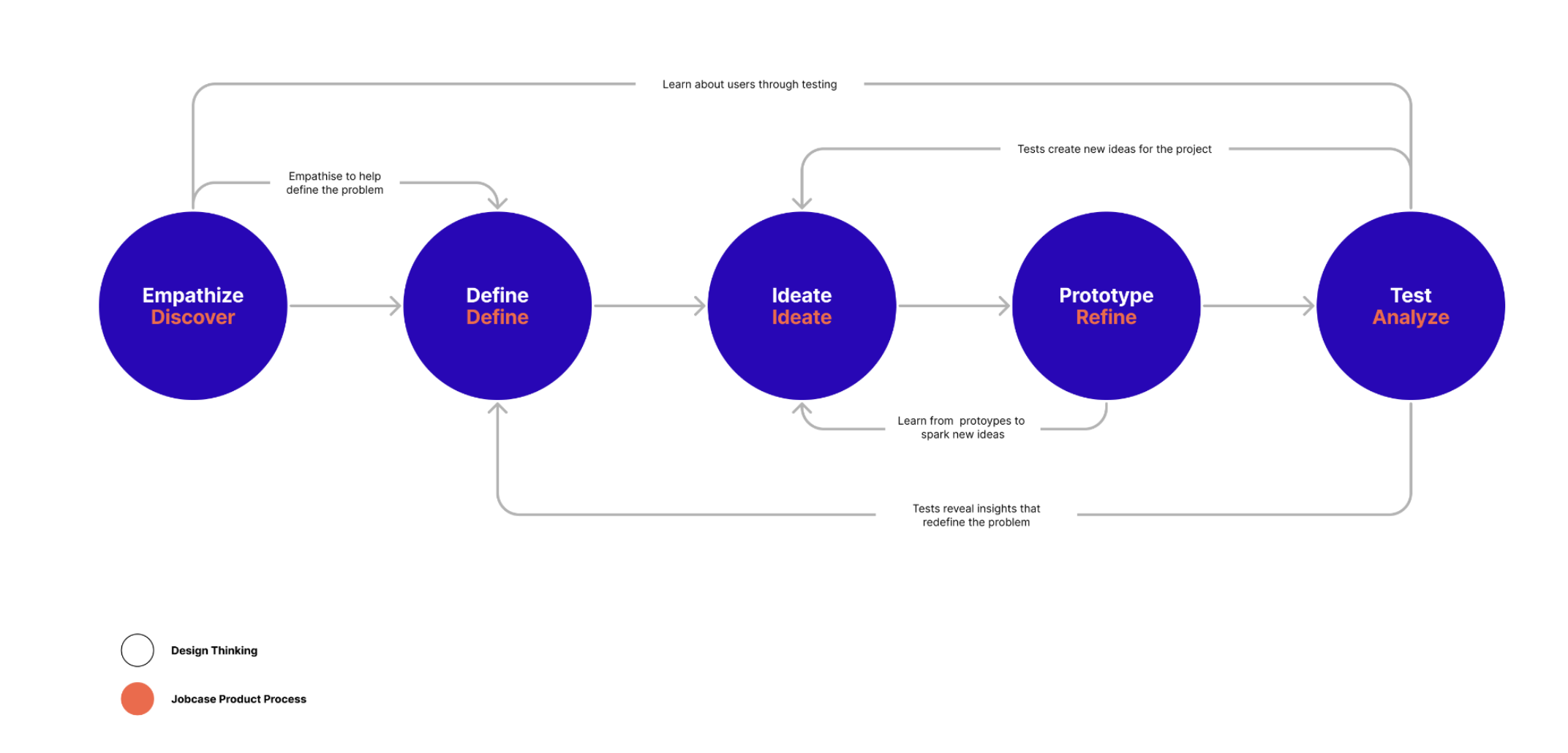
Phases of the design process
Designers can refer to this detailed chart as a comprehensive guide throughout the product development process. It outlines the key phases of Empathize, Define, Ideate, Prototype, and Test, providing specific outcomes, clues, and necessary feedback for each phase. By following this structured approach, designers can ensure they are effectively framing problems, defining strategies, generating and refining ideas, and validating solutions, leading to successful product launches. This resource helps designers stay aligned with project goals and make informed decisions at every step.
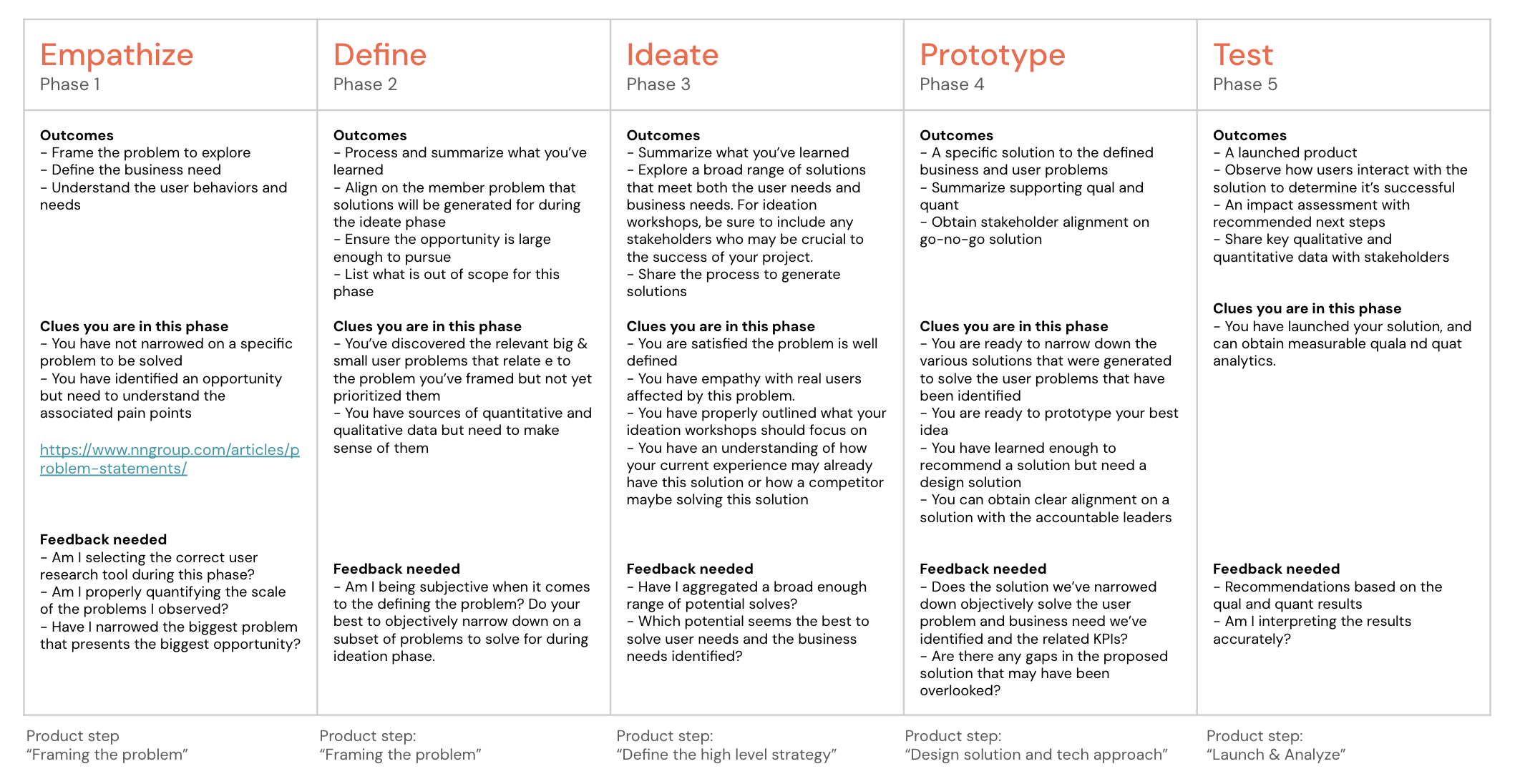
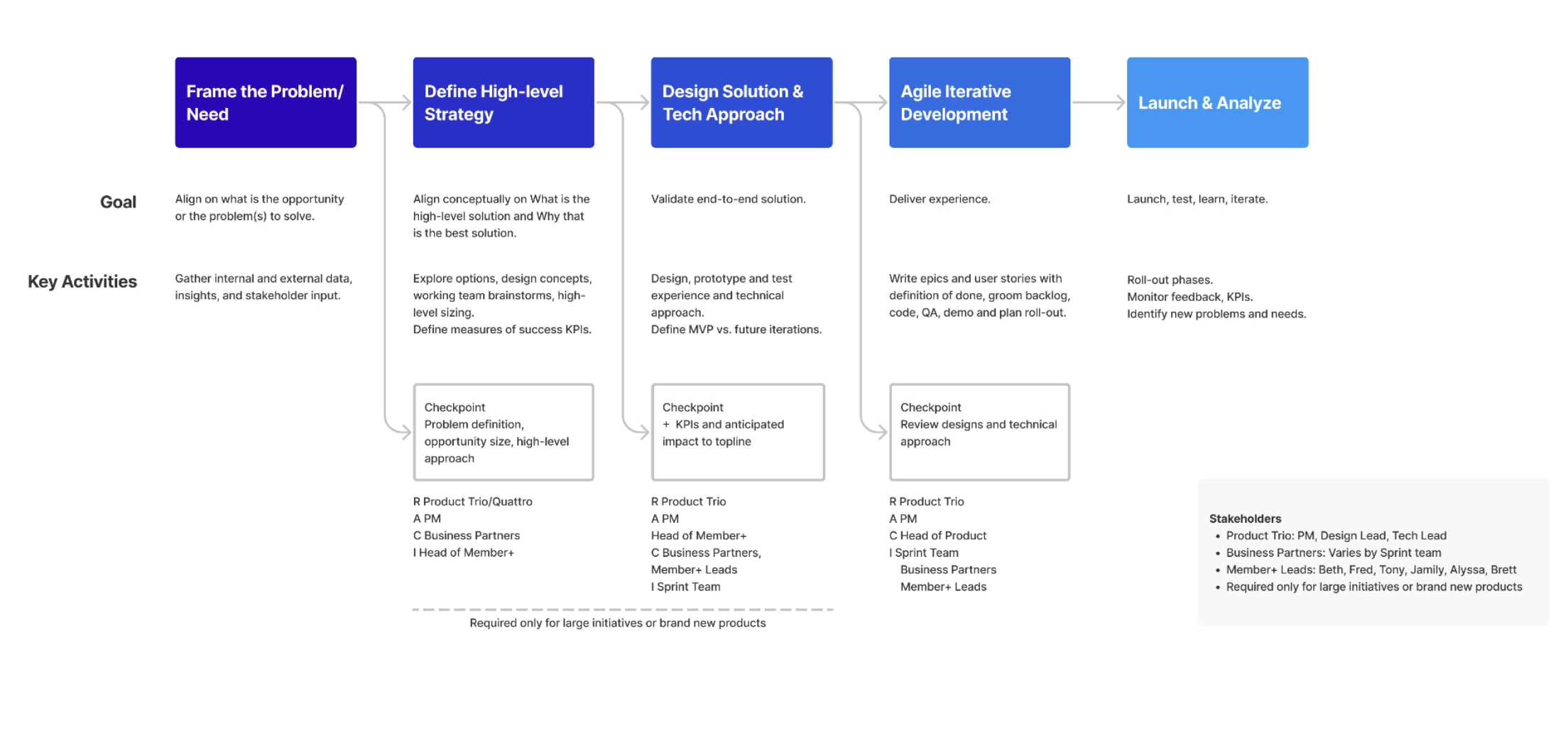
Tools to Guide My Designers
This slide presents a five-phase design process—Empathize, Define, Ideate, Prototype, and Test—each with essential tools and guides. In the Empathize phase, designers use methods like contextual inquiry and user interviews to understand user needs. The Define phase involves analytics and content inventory to frame the problem. Ideation employs creative techniques like brainstorming and wireframing. Prototyping focuses on creating and testing high-fidelity mocks. Finally, the Test phase uses A/B testing and cohort analysis to validate solutions. This structured approach ensures comprehensive problem-solving and effective design strategies.
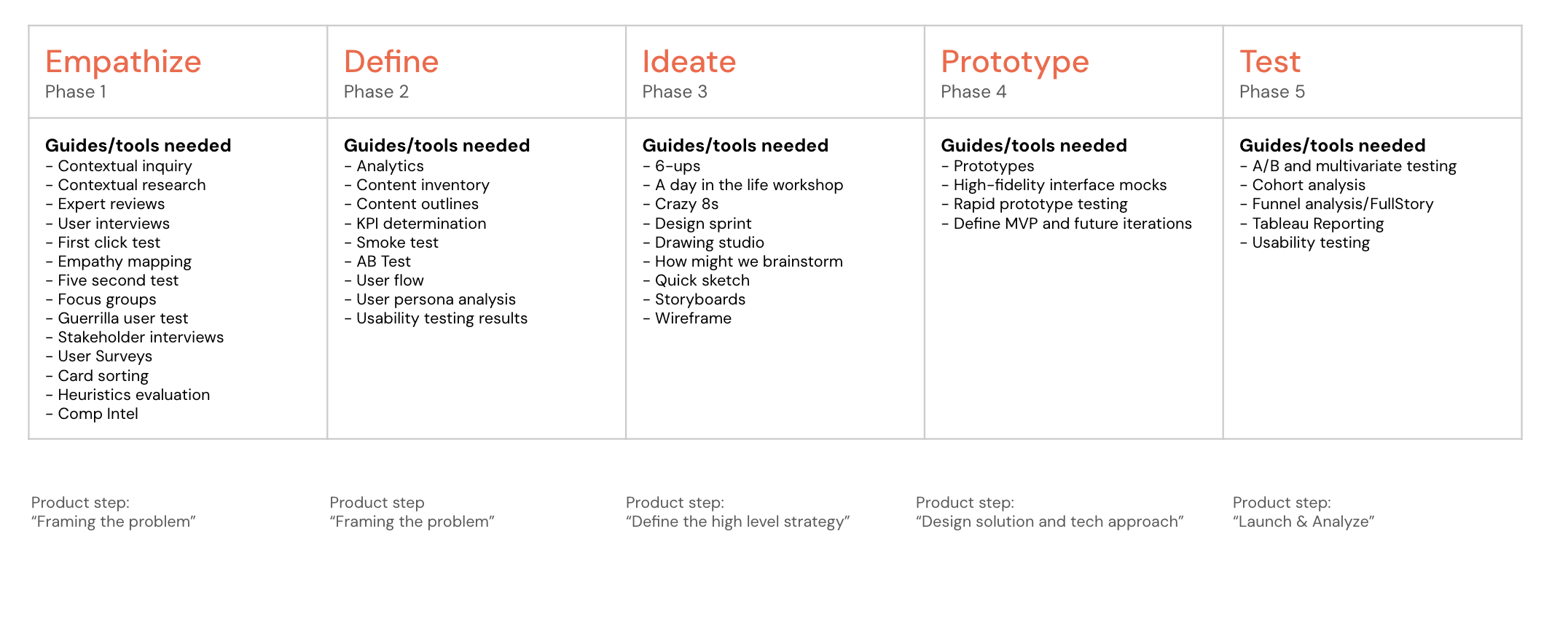
Research tools
The slide features four usability testing tools: Usability Hub, Optimal Workshop, UserTesting.com, and Fullstory. Usability Hub allows for design surveys and preference tests. Optimal Workshop offers tools for user research like card sorting. UserTesting.com provides real-time feedback via user interaction videos. Fullstory captures detailed user session data for comprehensive analysis. These tools help improve user experience by gathering and analyzing feedback.
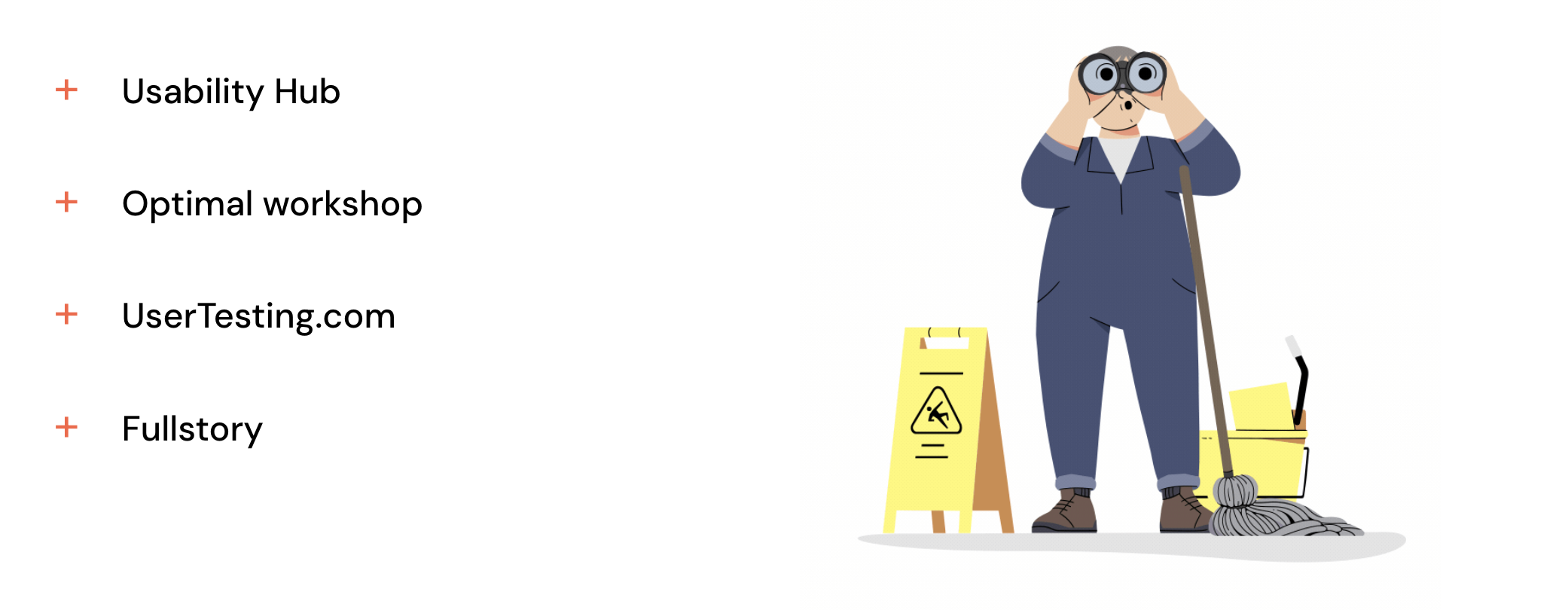
Conclusion
Crafting a product design strategy requires a careful balance of empathy, simplicity, consistency, and data-driven decisions. By adhering to these experience design pillars and embracing a collaborative design process, businesses can create products that meet user needs while driving growth and loyalty. Remember, a great user experience is an ongoing journey, not a destination. It's crucial to periodically refresh this strategy to reflect industry AI updates and trends, as tools and technologies are rapidly evolving.

